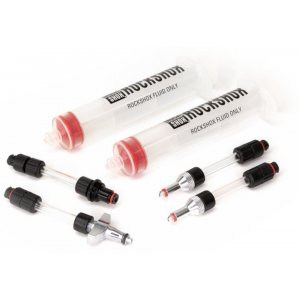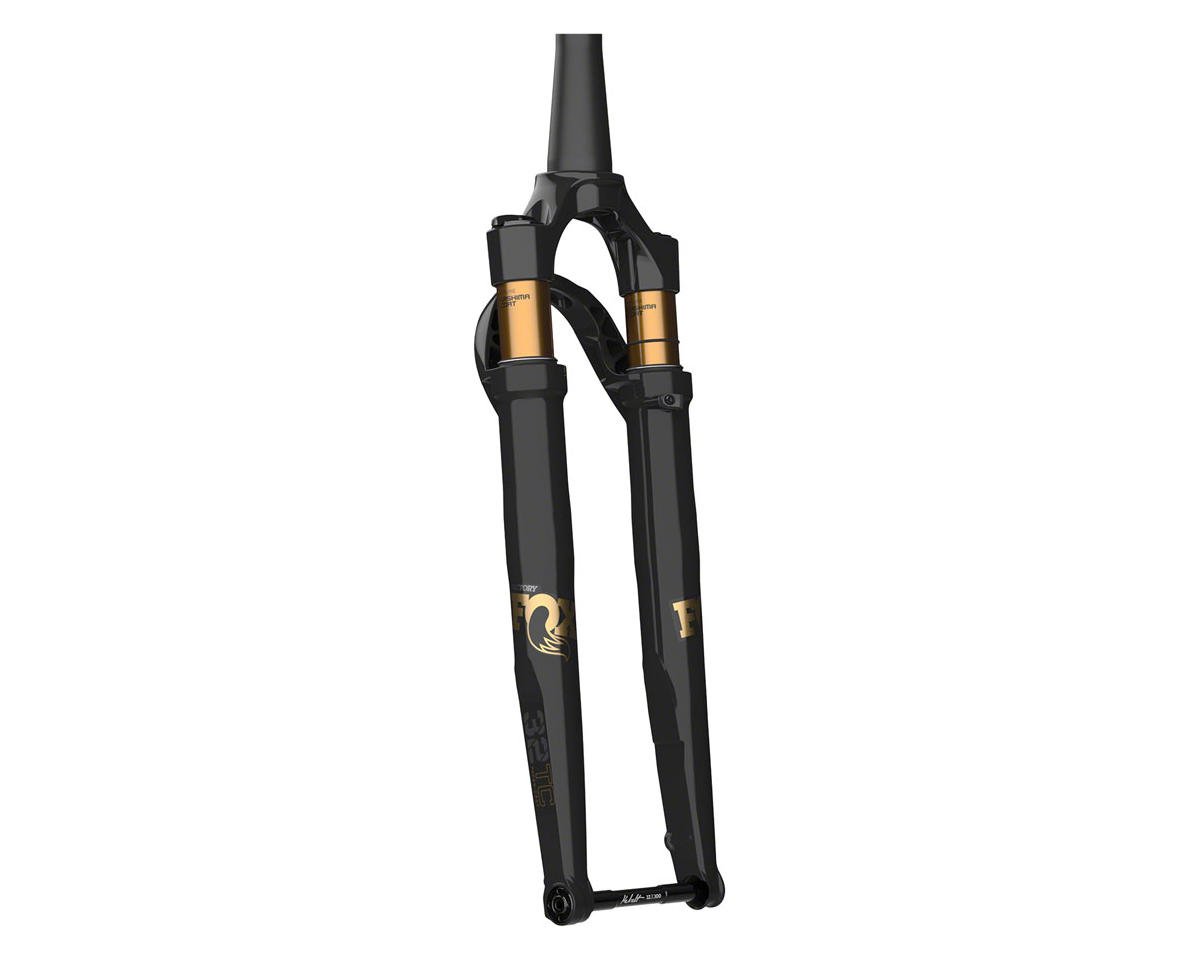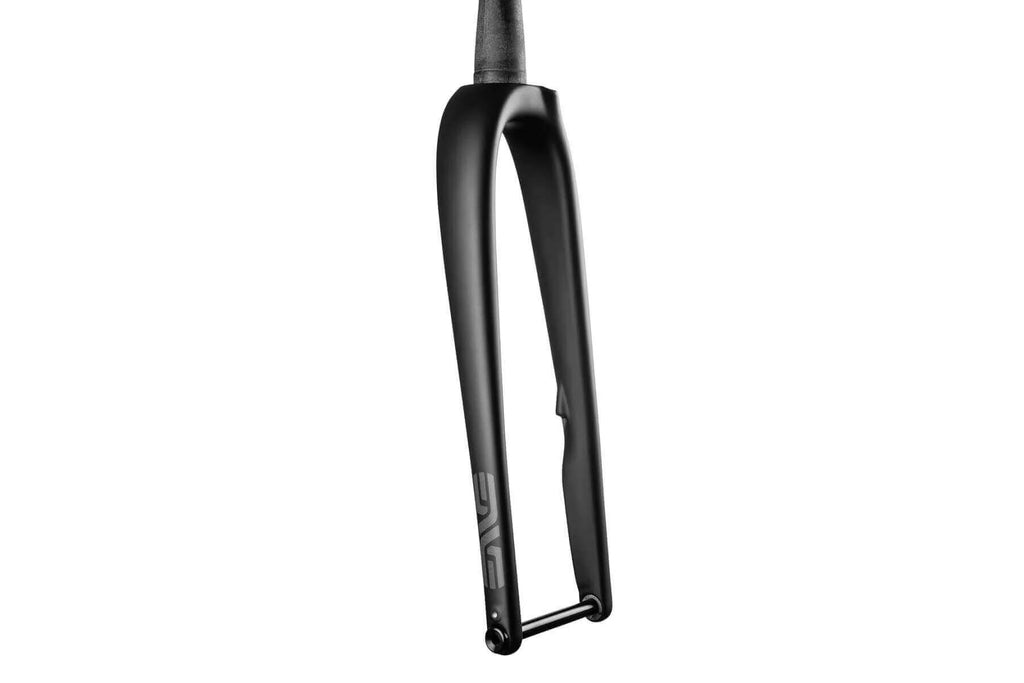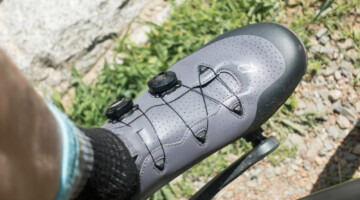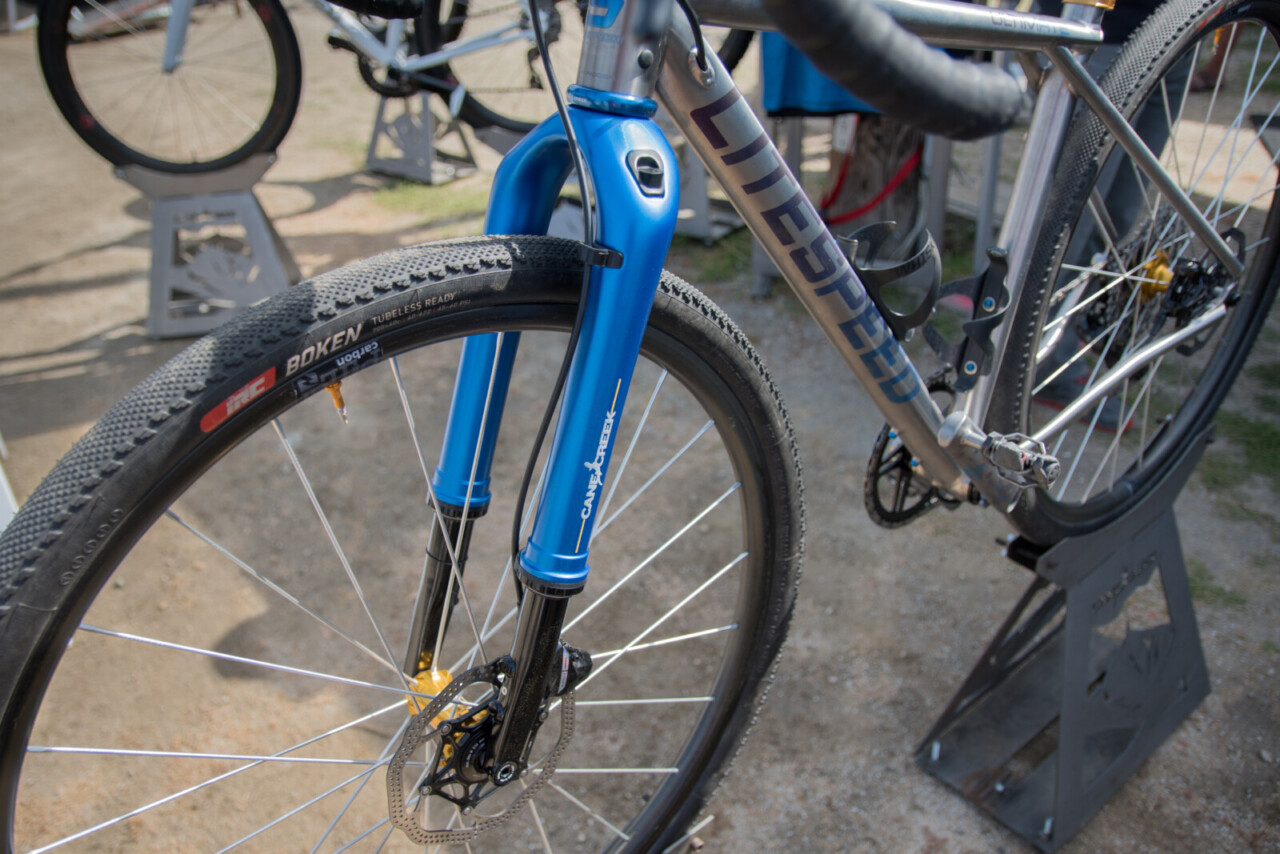
Cane Creek Invert CS fork. © C.Lee/ Cyclocross Magazine
Smoother is faster is a common saying for off-road riding. Faster is not always the desire, but more comfortable and more fun are universal desires we think. For that reason, adding suspension beyond your arms and legs on gravel bikes is popular. This comes in the form of simple accessories such as handlebar padding, a suspension stem, or a suspension seatpost . On the other end of the spectrum, full-suspension bikes that are short of mountain bikes are in the wild. This is not new, even Johan Musseuw tried one in Paris Roubaix a few decades ago.
View this post on Instagram
Suspension stems are light, simple and effective, but the handlebar rotates down as the stem moves, which is a mild annoyance at best and unnerving at worst. Specialized tried to solve this with the Future Shock telescoping steerer. Lauf of Iceland has a very active but undamped Grit gravel fork, the first suspension fork for gravel bikes. It meets the weight criteria but is unruly with larger repeated bumps and has polarizing esthetics. Fox answered with a short-travel mountain bike fork that evolved into the Fox 32 Taper-Cast.
New, but Not the First
Cane Creek revealed the Invert gravel fork at the Sea Otter Classic 2024 in Monterey, California. As the name implies, it is an inverted telescoping suspension fork. The most remarkable feature is its aesthetics. First and foremost, it looks befitting of your nice drop bar gravel bike with a smooth carbon fiber fork crown that is integrated with the aluminum fork legs.
At the Sea Otter Classic Cane Creek touted the Invert as the “world’s first gravel fork.” I think Lauf gets that title considering its introduction more than 6 years ago. However, Cane Creek has entered a more mature gravel bike market with the advantage of seeing what has worked and not. Their goal was suspension with lightweight, simplicity, and good aesthetics.
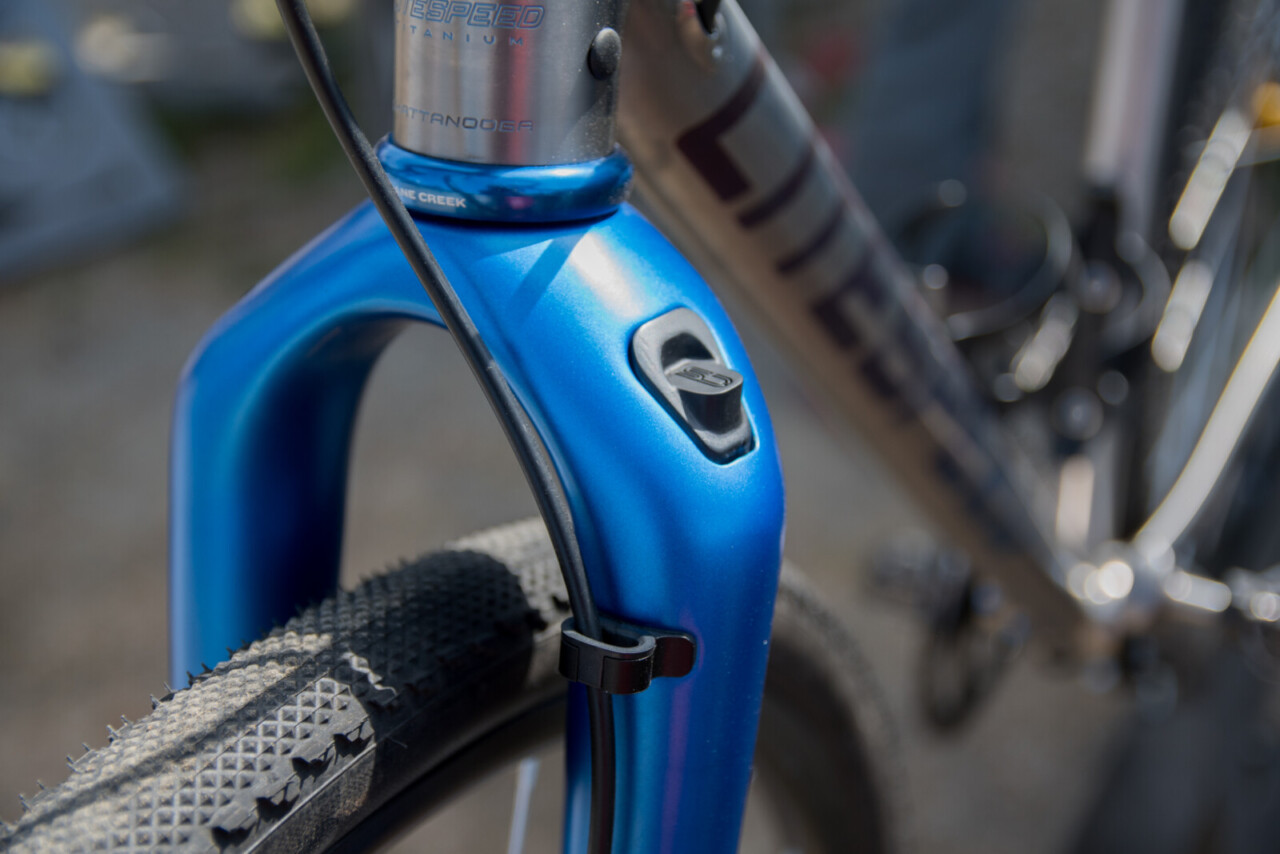
Cane Creek Invert CS fork with climb switch on top of the crown. © C.Lee/ Cyclocross Magazine
Two models of the Invert fork are available starting at 990 grams at USD 1100. 30mm of air-sprung travel is tunable only by varying air pressure. The CS model has a button on top of the left fork crown that Cane Creek calls a “climb switch.” This feature locks out the fork suspension when activated. The CS model has 40mm of travel, weighs 1130 grams, and costs USD 1200.
The Invert fork has a tapered carbon steerer and carbon fork crown with an integrated 36-degree crown bearing race molded in. The fork includes a Cane Creek ZN40 52mm bearing. This is a fairly standard part and hopefully, it fits into your frame. Axle-to-crown distance is suspension correct for a bike with an axle-to-crown distance of 420mm-435mm. The fork will fit a 50mm tire easily and is compatible with 650B wheels even though it is designed around a 700C wheel size.
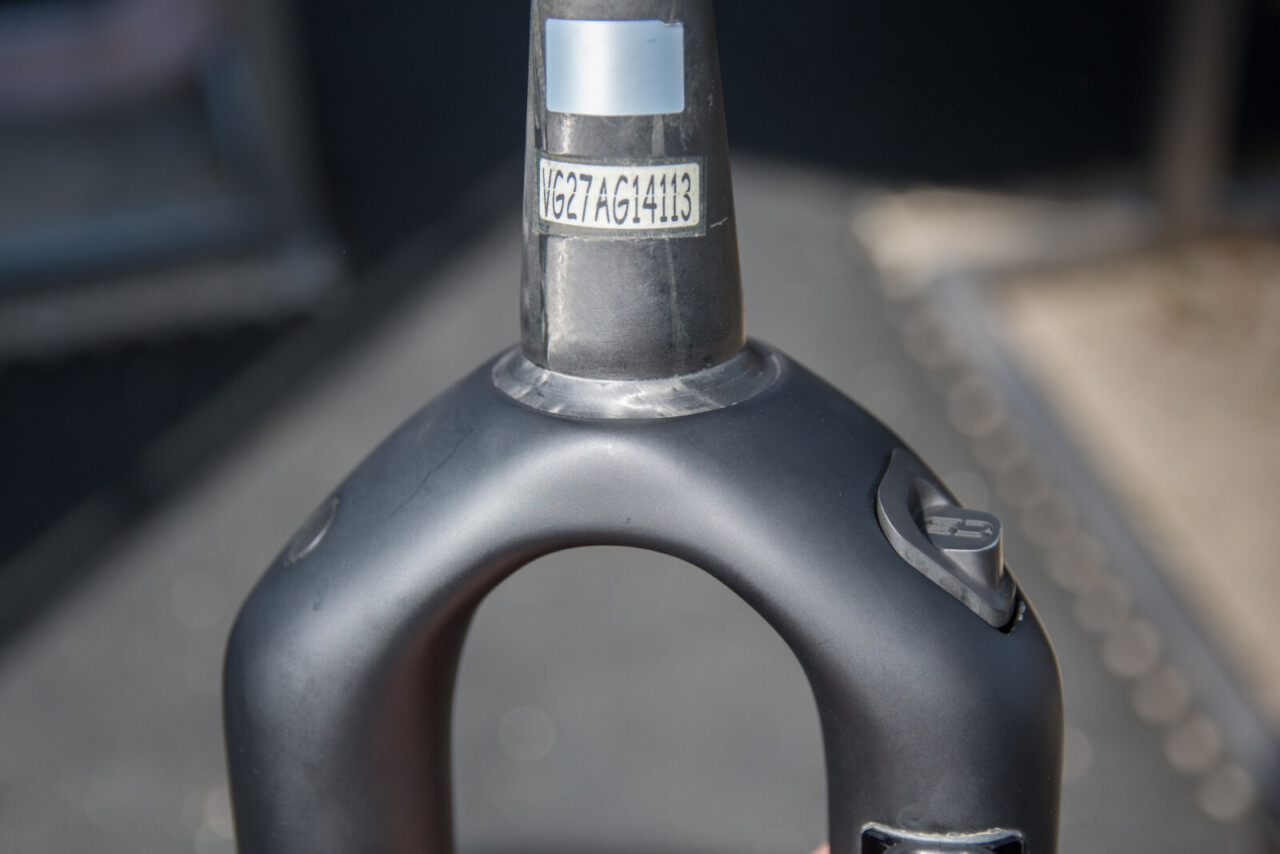
Mold-in integrated crown race on the Cane Creek Invert fork. © C.Lee/ Cyclocross Magazine
The lower fork legs are solid aluminum with a provision for a flat mount caliper native for a 160mm rotor and external brake line. The air valve is on the back side of the right stanchion. Cane Creek recommends starting with 95% rider body weight (imperial) plus riding gear. The maximum rider weight plus gear is 250 pounds, 250 psi is the maximum safe air pressure.
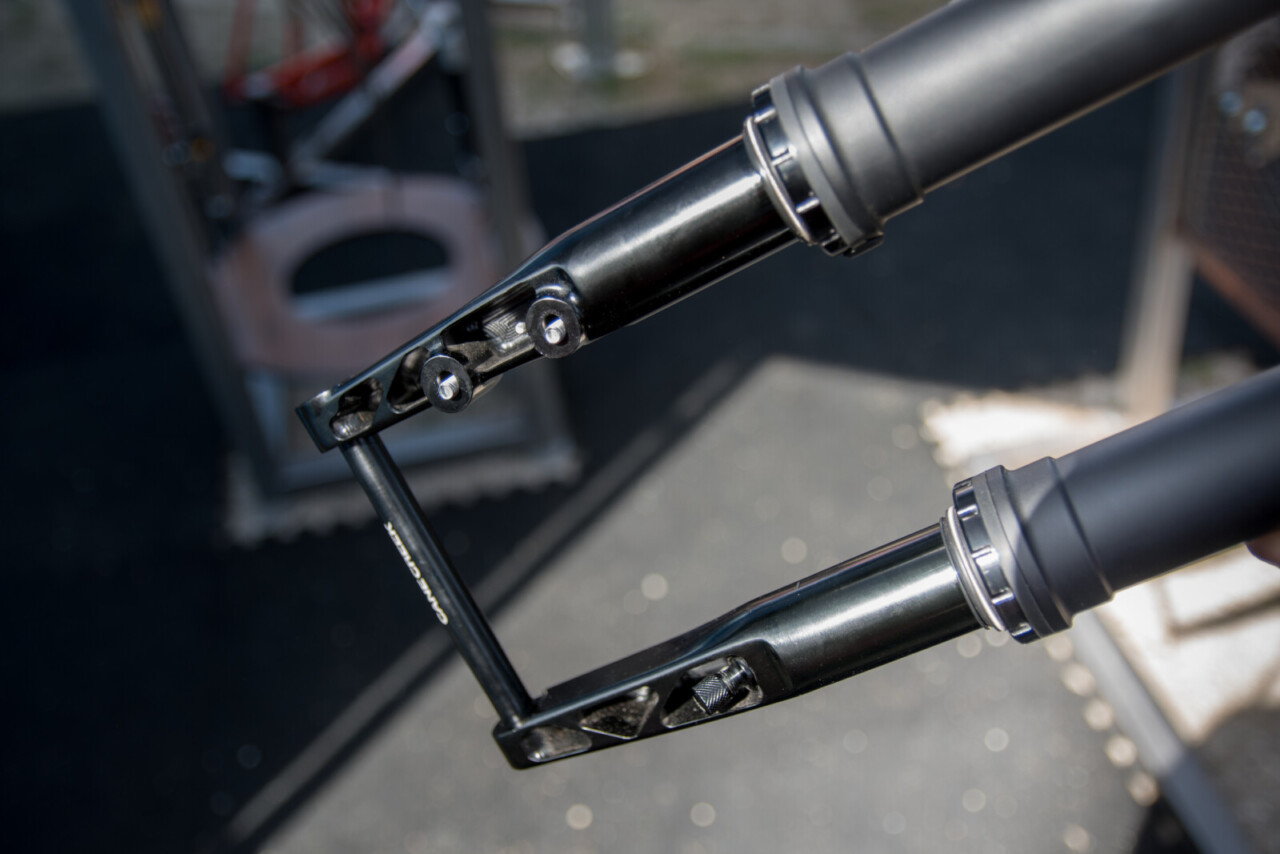
Cane Creek Invert fork machined back side of lower stanchions. Lock rings on the uppers use a standard BB tool to ease maintenance. © C.Lee/ Cyclocross Magazine
The Cane Creek Invert has no specific motion control system. It is just a limited 40mm or 30mm travel with wiper seals and two lower stanchions connected by the 12mm through axle. Cane Creek told me that it is stiff enough and specific damping is not necessary given the short travel.
Can Creek recommend a 50-hour service interval. The procedure is simple for a home mechanic who can change a chain, tire or cassette. The service interval is an oil change for the 5 ml of the 15 wt fork oil. The two rings at the bottom of the upper fork legs are loosened with a standard BB tool, the oil drained and refilled, then the stanchions put back in place and the rings tightened. At 100 hours Cane Creek recommends removing the air spring for service, a slightly more complicated procedure that can be fulfilled at your dealer, though an advanced home mechanic could accomplish this.
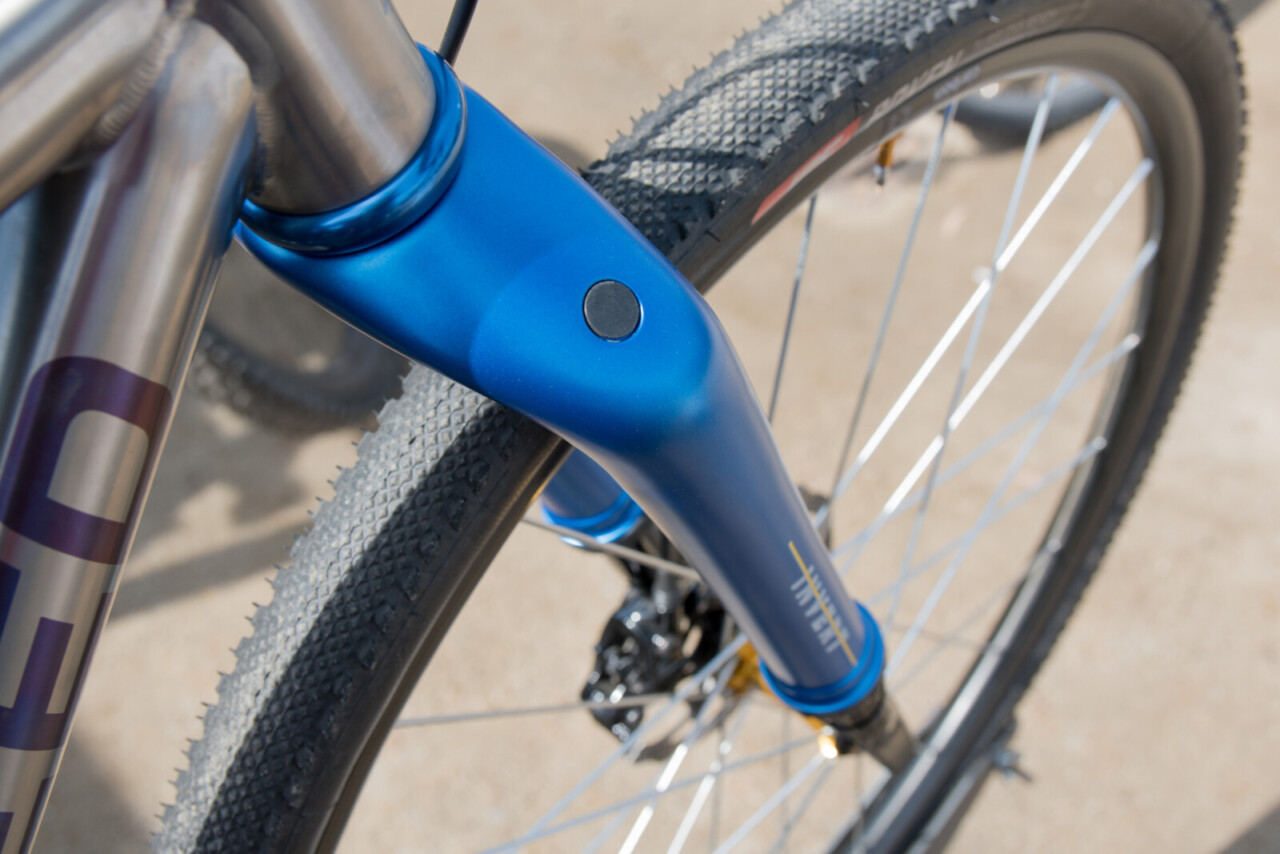
Can Creek Invert CS fork. This right-side cap gives access to the air cartridge bolt for 100-hour servicing. C.Lee/ Cyclocross Magazine
When removing the wheel and without the through axle in place, each fork stanchion can rotate freely. Cane Creek avoided complicated designs that would make free stanchion movement and maintenance more difficult.
The Ride
We had the opportunity to ride the fork at the Sea Otter Classic. This is certainly not a test ride but an opportunity to see how active the fork is, whether damping is adequate, how the suspension fork affects steering and handling, and if the lock-out is easy to operate. I got to test the Invert CS fork on a Santa Cruz Stigmata with a 45mm Maxxis Rambler on the front pumped up to an unverified “around 30 psi”.
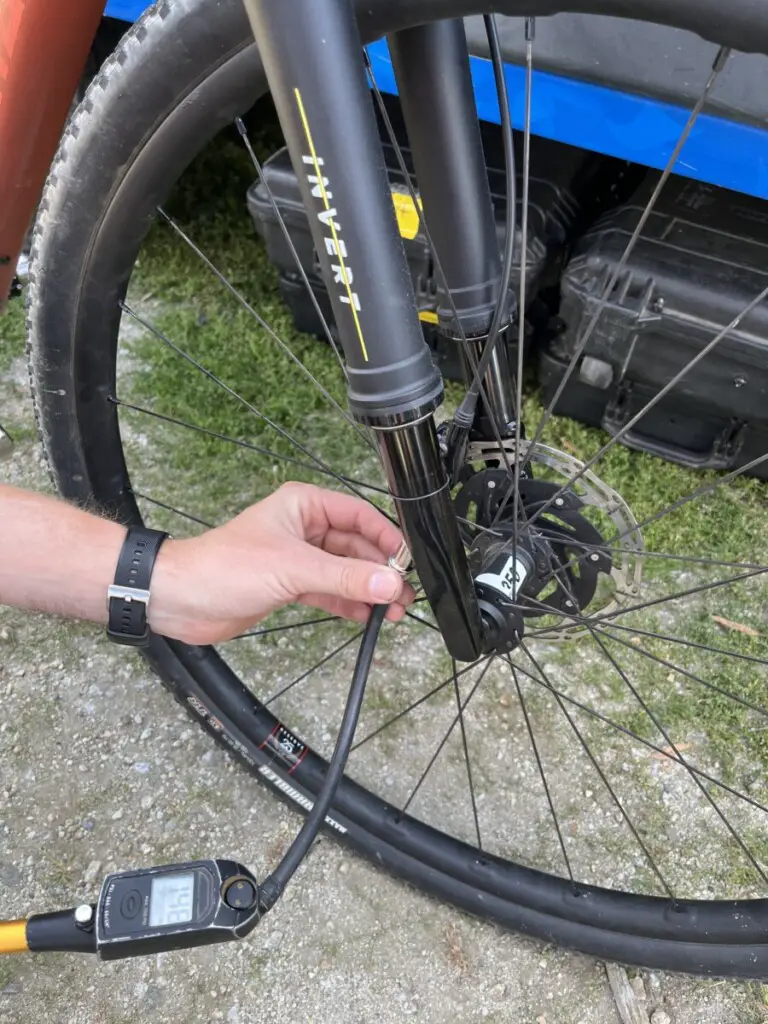
Cane Creek Invert fork starting pressure recommendation is 95% of rider weight. © C.Lee/ Cyclocross Magazine
The starting pressure was 148 psi, 95% of my unladen body weight of 155. The Laguna Seca Raceway venue offers a lot of varied off-pavement terrain in the surrounding area, but I only had an opportunity for a short test ride, so stayed close around the expo area mostly on hard-packed dirt, so I had to find some curbs and other features to test bigger hits. I did not even have enough time to go to the off-road demo course for this quick first ride.
I will first say the fork seems active enough. It observably moves with my body weight shift and on transitions. There was not enough washboard or surface undulation to assess the true vibration damping. Small curb jumps gave a feel of the progressive rate of the air spring, and whether or not the lack of motion control was going to be problematic. After a hard compression the fork does not have a sharp rebound and bounciness is not apparent. Parking lot cornering and other maneuvers prove there are no immediate quirks from the inverted design. For example, with the Lauf Grit, when you push the bike down hard in a corner, one side would drop a bit more before the other. This did not seem apparent with the Cane Creek Invert.
Cane Creek said the through axle and short travel did not demonstrate any uneven stanchion movement problems with their ride testing. They also blind-tested damped vs non-damped forks and riders could not discern the difference. This led to eliminating the damper to keep the fork simple and light
The lock-out is easy to operate. A simple firm push of the button and the fork becomes firm. It’s not a 100% lockout, hard lockout, but it’s certainly firm enough to act more like a rigid fork. On two occasions the climb switch got stuck in a locked-out position. I could undo it after stopping and pushing the button more firmly. I inquired and the representatives at the Cane Creek booth had not heard of the experience. I chalked it up as a quirk of an early production sample.
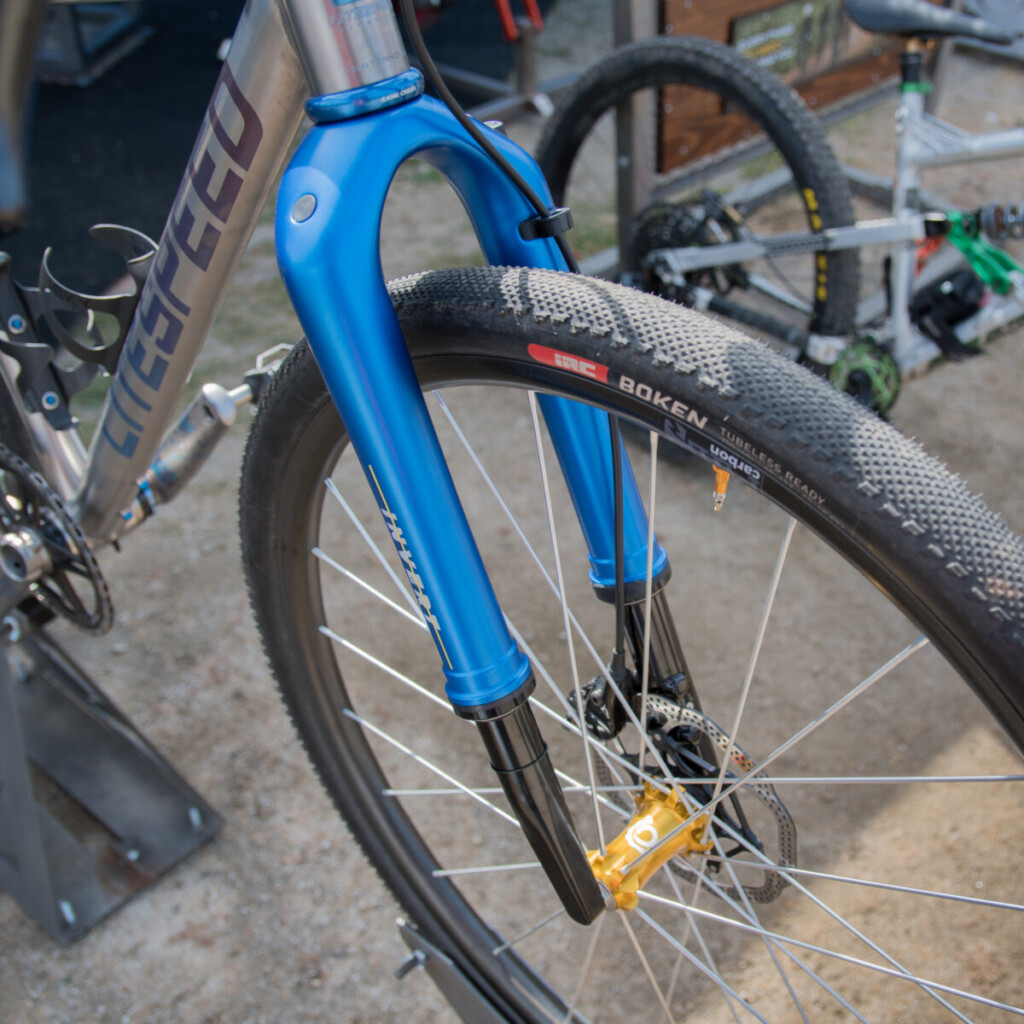
Cane Creek Invert CS fork. © C.Lee/ Cyclocross Magazine
We look forward to a extended ride and review of the Cane Creek Invert fork when it becomes available later this summer. I think Cane Creek has the right idea with the Invert fork. Smoother is faster, and faster is more fun in many cases.
Cane Creek Invert gravel suspension fork 990 grams, USD 1100
Cane Creek Invert CS 1130 grams, USD 1200
Both are available late June 2024
More info: Canecreek.com















